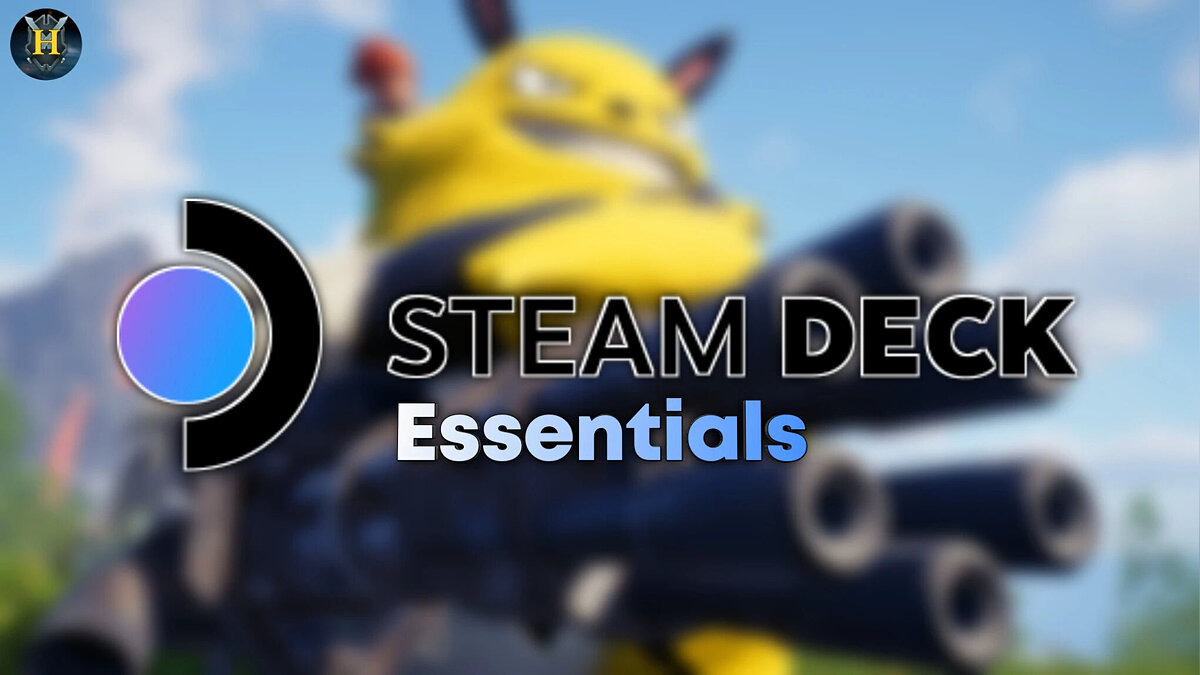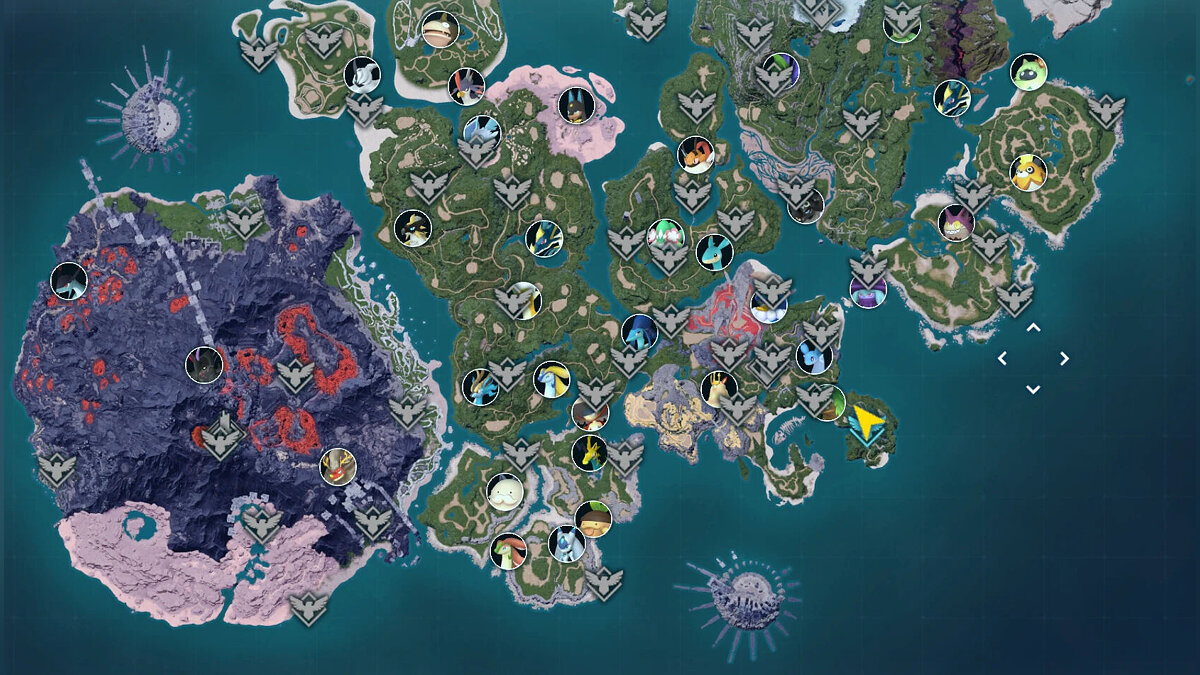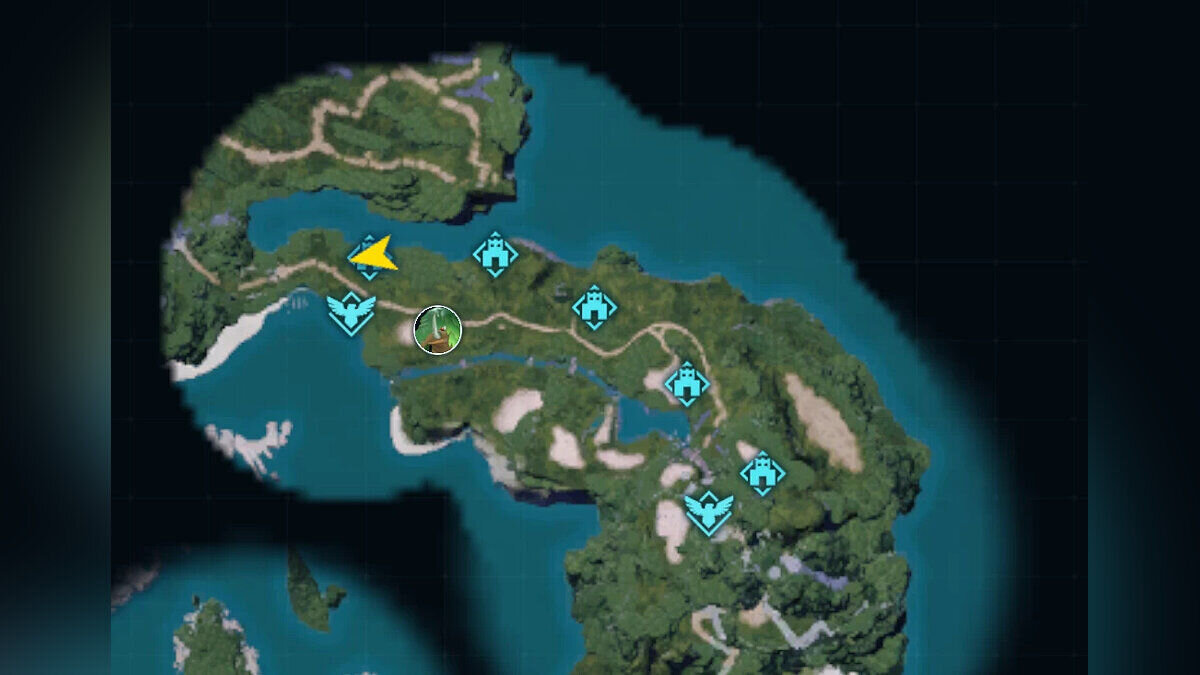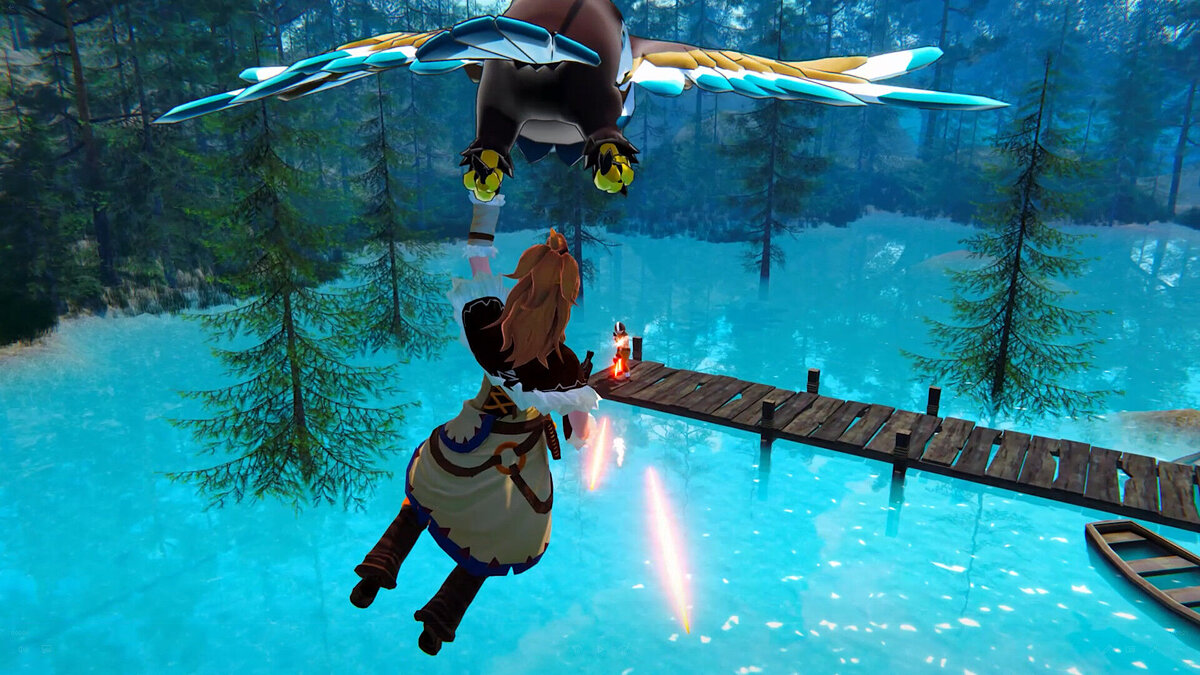Palworld
Arcade action-survival game from a third-person perspective in a vast open world with a key mechanic of taming unusual creatures called Pals. They resemble Pokémon... Read more
Arcade action-survival game from a third-person perspective in a vast open world with a key mechanic of taming unusual creatures called Pals. They resemble Pokémon in appearance, but according to the lore, they are ordinary beasts — they can be used, captured, sold, and defeated.
Combining ideas from different genres, Palworld doesn't limit itself to a single setting, offering a journey from a stone axe to a bazooka, from a primitive camp where everything must be done by hand to a complex conveyor where employed prisoners take care of everything. These prisoners are the Pals. They will become helpers in routine tasks, companions in battle, beloved pets, and wild beasts used for food. Additionally, the game includes resource gathering, processing, a construction system focused on base development, and technology upgrades.
At the time of early access, the structure of the Palworld universe is unknown, except that the action takes place in a post-apocalyptic setting. Events begin some time after a global catastrophe, with known civilizations having vanished into oblivion. The protagonist's biography is that of a typical adventurer seeking to uncover all the hidden corners of the world. Gathering available geographical maps, he identifies an unexplored area and sets out to investigate it.
Encountering a strange protective barrier along the way, the protagonist suffers a shipwreck. Waves wash the hapless explorer onto an archipelago not marked on any map. A true "terra incognita" with traces of artificial origin — mysterious creatures, artifacts, portals to other dimensions, ruins of the Ancients, and a giant world tree in the center.
The plot and narrative were not the focus of Palworld's early access. There are a few characters to chat with, as well as story bosses and factions. The former have their own stories of how they ended up on the island and mastered their personal armies of Pals, while the latter have a unique code of honor. Traditional quests for such games were absent. The lore was explained through scattered notes and item descriptions. A full-fledged plot was planned by the developers for the final version.
The action takes place on the Palpagos Islands archipelago, consisting of numerous islands of varying sizes, each of one of four types:
- A good half of the world is occupied by low-level islands of a forest-steppe biome with a wide variety of landscapes, where the player will find many Pals and basic resources, with minimal dangers;
- The desert biome lives up to its name and complicates survival — in the morning and afternoon, one must hide from the heat, and at night, keep warm due to extreme cold. A wide variety of Pals by type and species is complemented by rare resources;
- The volcanic biome, covered with craters, lava lakes, and a thick layer of ash, meets players with intense heat, requiring constant additional protection. Many valuable resources and fire-resistant Pals can be found here;
- Incredible cold, numerous dangers, and icy Pals await in the snow biome — an endgame area for high-level characters.
The world is open from the start, but movement is restricted by the level difference between the protagonist and each zone. The higher the level, the greater the chance of dying from a sneeze by the natives, who have high damage and health. Fast travel points are scattered across the map, there is a teleport to the player's base, and a choice of respawn point after death. Over time, flights on Pals become available, similar to "Zelda." The map is interactive, serving as both a navigational tool and a hint, visualizing the habitats of Pals, treasures, bosses, etc. Apart from nature, the world's content is small — a few raider bases, tower-like structures, and dungeons.
In Palworld, there are over a hundred Pals, each with their own characteristics, strengths, weaknesses, set of abilities, and most importantly, element (water, fire, earth, lightning, and others, a total of nine). The interaction between elements resembles "rock-paper-scissors," where some elements are stronger than others but weaker than a third. For example, a fire Pal's attacks will deal more damage to an ice Pal than vice versa and will be weaker against a water Pal's attacks.
Characteristics (attack, defense, stamina, health, carrying weight, work speed, and food consumption) define each Pal's individuality and improve as they level up. This includes training and battles, completing tasks that affect experience gain, and using useful equipment and even weapons.
In early access, Pals had their own skill system:
- Active — used in battle, up to three can be learned, each further enhanced by elemental attributes;
- Passive — unique to each Pal, randomly determined at their appearance. They affect the helper's build for better (or worse), allowing them to deal more damage but work poorly, or vice versa;
- Partner — activated when a Pal is in the player's party, affecting the hero. For example, increasing carrying weight or running speed. Unique to each species.
Pals are not just companions and fighters. They are reliable household helpers, predisposed to various tasks: resource gathering, plantation care, cargo transport, etc. Base development, where process automation relies on Pal labor, adds a unique economic strategy element to the gameplay. However, they also need care: timely feeding, washing, letting them sleep, and monitoring their mood. A monster that catches "depression" can wreak havoc.There is a breeding mechanic to obtain desired skills and characteristics. By selecting a pair with suitable traits, feeding them sweets, and placing them in a secluded spot, the player eventually receives an egg to hatch in the Incubator. The result of breeding is unpredictable but "inherits" from the chosen Pals. After a few tries, the desired combination will emerge. There is also a chance to obtain a completely new species through breeding.
In early access, Palworld offered a poorly tuned but standard "entertain yourself" attraction: explore the world, collect pals, discover new technologies and develop, set up new bases and workbenches, defend against enemies. Despite the initial variety, the patterns quickly become predictable, reducing the gameplay to repetitive actions.
All activities bring experience, which accumulates into levels. As the level increases, the character receives technology points, which can be used to purchase blueprints for crafting new tools, weapons, various devices, or structures, as well as attribute points. Distributing the latter among 5 attributes — health, damage, stamina, carrying weight, and work speed — eases the player's survival. There is no auto-leveling — neither for the world, the protagonist, nor the pals.
Starting with wooden clubs and stone axes, within 20-30 hours, the player progresses to crossbows, rifles, and even rocket launchers. To create weapons, necessary materials must be collected, but crafting in early access was simple. There is an inventory where the protagonist stores loot collected during the game, allocates weapons and first aid items to slots. Excess is stored in chests.
The main goal to complete Palworld in early access was to defeat the leader of each of the five game factions. To do this, it was necessary to invade the eponymous Tower, defended by his faction, and fight his personal pal and the boss himself. On the way to the goal, factions could pursue the player for violating their code of conduct and also invade his bases. Such violations included attacking ordinary people, faction members, or actively exterminating pals.
Palworld can be played with 2-4 friends, either by launching your own game server or on dedicated servers, where up to 32 players can run around. Multiplayer requires creating a new character, and it will remain tied to the world or server where it was created. That is, on each new server or in co-op mode, there will be a separate character with its own progression.
In addition to joint actions for base development and resource gathering, in both modes, you can exchange created pals, trade items, and join existing guilds. PvP was added to multiplayer later with its own rules. As well as character transfer between different servers and platforms.
- A character editor is available before starting the playthrough. Mods are also available in the game;
- All game systems actively exploit the grind mechanic, slowing down progression;
- Like any game-as-a-service, Palworld received several years of updates, adding crossplay between Steam and Xbox, new islands, technologies, weapons, pals, and their equipment.
Trailers, gameplay, and other videos
Store Offers and Discounts
System requirements and PC test
- Windows 10
- CPU: Intel Core i5-3570K
- RAM: 16 GB
- Free Space: 40 GB
- VRAM: 2 GB
- Video Card: GeForce GTX 1050
- DirectX: 11
- Широкополосное подключение к интернету
- Keyboard, Mouse
- Windows 10
- CPU: Intel Core i9-9900K
- RAM: 32 GB
- Free Space: 40 GB
- VRAM: 6 GB
- Video Card: GeForce RTX 2070
- DirectX: 11
- Широкополосное подключение к интернету
- Keyboard, Mouse
Reviews and ratings
Well, it's time to write a review of this game. Let's start with the graphics; they are pleasing to the eye, but nothing outstanding. The gameplay is generally good, there are a lot of things you can think of to entertain yourself. The plot is essentially non-existent  , the music and sounds are so-so, the optimization is good, the controls are average. To summarize, the game as a whole is worth your money, but you must understand the game will not drag you on for a long time because when you defeat all the bosses and there are only 5 of them, then there is nothing else to do in the game
, the music and sounds are so-so, the optimization is good, the controls are average. To summarize, the game as a whole is worth your money, but you must understand the game will not drag you on for a long time because when you defeat all the bosses and there are only 5 of them, then there is nothing else to do in the game  , in general my rating is 6.9/10 aaaand remember the fires know how to defend themselves
, in general my rating is 6.9/10 aaaand remember the fires know how to defend themselves 
Ну чтоже пришло время написать обзор на эту игру. Начнем с графики она приятно глазу, но ничего выдающегося. Геймплей в целом хороший много всего можно придумать как себя развлечь. Сюжет его по сути нет  , музыка и звуки так себе, оптимизация хорошая, управление средние. Если подытожить игра своих денег в целом стоит, но вы должны понимать игра вас надолго не затянет поскольку когда вы победите всех боссов а их всего 5 то делать в игре больше нечего
, музыка и звуки так себе, оптимизация хорошая, управление средние. Если подытожить игра своих денег в целом стоит, но вы должны понимать игра вас надолго не затянет поскольку когда вы победите всех боссов а их всего 5 то делать в игре больше нечего  , в целом моя оценка 6.9/10 иииии помните палы умеют защищаться
, в целом моя оценка 6.9/10 иииии помните палы умеют защищаться 
The game Palworld has become very popular lately, so I want to write a review about it.
On the plus side - in the game, you will always find something to do; many Pokemon of different types; appetizing graphics; you can play with friends, so the game will definitely take you more than 100 hours; tasty price for such a large-scale game; and most importantly - uniqueness (there definitely haven’t been Pokemon with machine guns yet))
Огромную популярность получает игра Palworld в последнее время, поэтому хочу написать о ней отзыв.
Из плюсов — в игре, вам всегда найдётся, что делать; множество покемонов разных видов; аппетитная графика; можно играть с друзьями, так игра у вас точно займёт более 100 часов; вкусная цена, за такую масштабную игру; и самое главное — уникальность (покемонов с автоматами ещё точно не было))
Мир цепляет первые несколько часов, затем все скатывается в однотипную рутину. Экономика добычи и производства постоянно сводится к недостатку ресурсов, если без гайдов. С гайдами все превращается в форпосты добычи в определенных местах мира. Палы, на которых, постоянно тупят, мешают своими габаритами друг другу. Постоянно залазят на постройки и стоят АФК, пока не умрут с голоду. Прогрессия по уровню сводится к поимке всех палов по 10 штук, позже становятся бесполезным источником валюты.
Игра на пару часов, вдолгую смогут остаться только любители такого жанра, кто сможет закрыть глаза на оптимизацию. Не осуждаю, личное мнение из опыта 40 часов геймплея
I played the game a month and a half ago, but only got around to writing a review now.
(Played 15 hours with a friend). If I'm talking about the game from the good side, then from the beginning I would touch on the graphics, they are nice, cartoonish and fit the theme with the sticks.
I can’t say anything about the controls, the usual ones seem to be more or less convenient, the sounds are the same, but the most important thing in such games about survival and base building is the gameplay. So, at first it’s cool - you’ve cut down a couple of trees, you’ve already got a new level, you’ve caught the first fella and you’ve got another level up, but in short, the game is fun until one moment, namely when you start opening items that require iron ingots. After this, the game turns into a tediou… Read full
Играл в игру еще месяц — полтора назад, но руки дошли написать отзыв только сейчас.
( Наиграл 15 часов с другом). Если рассказывая о игре с хорошей стороны, то с начало я бы затронул графику , она приятная, мультяшная в тему с палами как раз подойдет.
Об управлении ничего сказать не могу , обычное вроде более — менее удобное о звуках тоже самое, но самое главное в таких играх про выживание и постройку базы, это геймплей. Итак, по началу он прикольный — срубил пару деревьев у тебя уже новый уровень, поймал первого пала и еще плюс уровень, но если коротко, игра прикольная до одного момента, а именно тогда, когда ты начинаешь открывать предметы для которых нужны железные слитки. После этого, игра превращается в нудное собирательство железной руды, а еще не стоит забывать, что в игре еще есть о… Read full
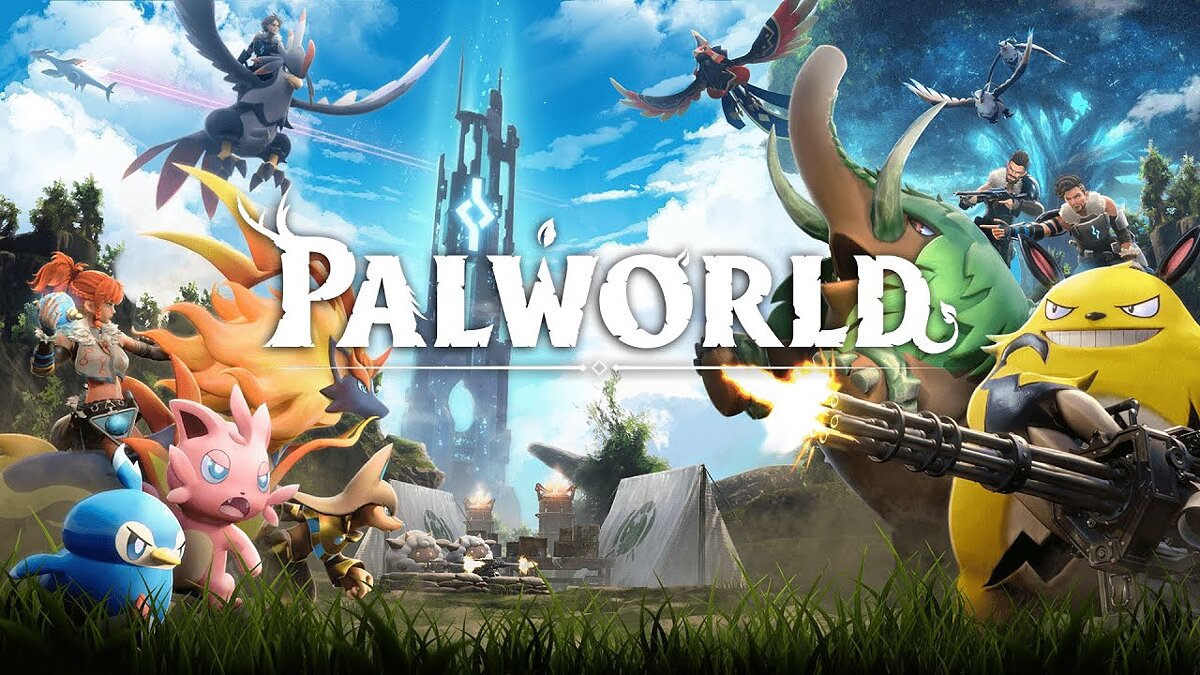
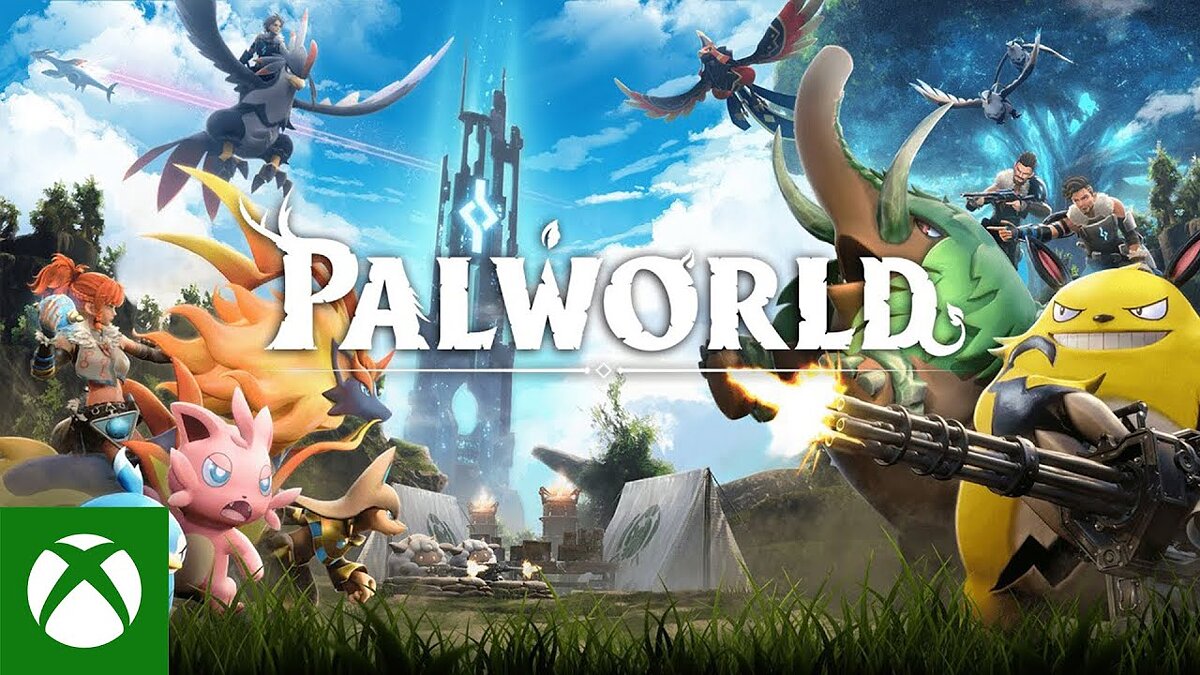




















![Palworld EN Argentina (Argentina) [Xbox One/Series/Windows]](/uploads/shops_images/gamivo/49967c64780401ff09f5bb5a96286314_full.webp)




![Palworld EN Japan (Japan) [Xbox One/Series/Windows]](/uploads/shops_images/gamivo/df21b0b1c9b538b6ce6ebc447eab0a05_full.webp)
![Console activation [UPD: 01/22/2024]](https://files.vgtimes.com/download/posts/2024-01/thumbs/aktivacija-konsoli-upd-22-01-2024_1705998863_99695.jpg)
